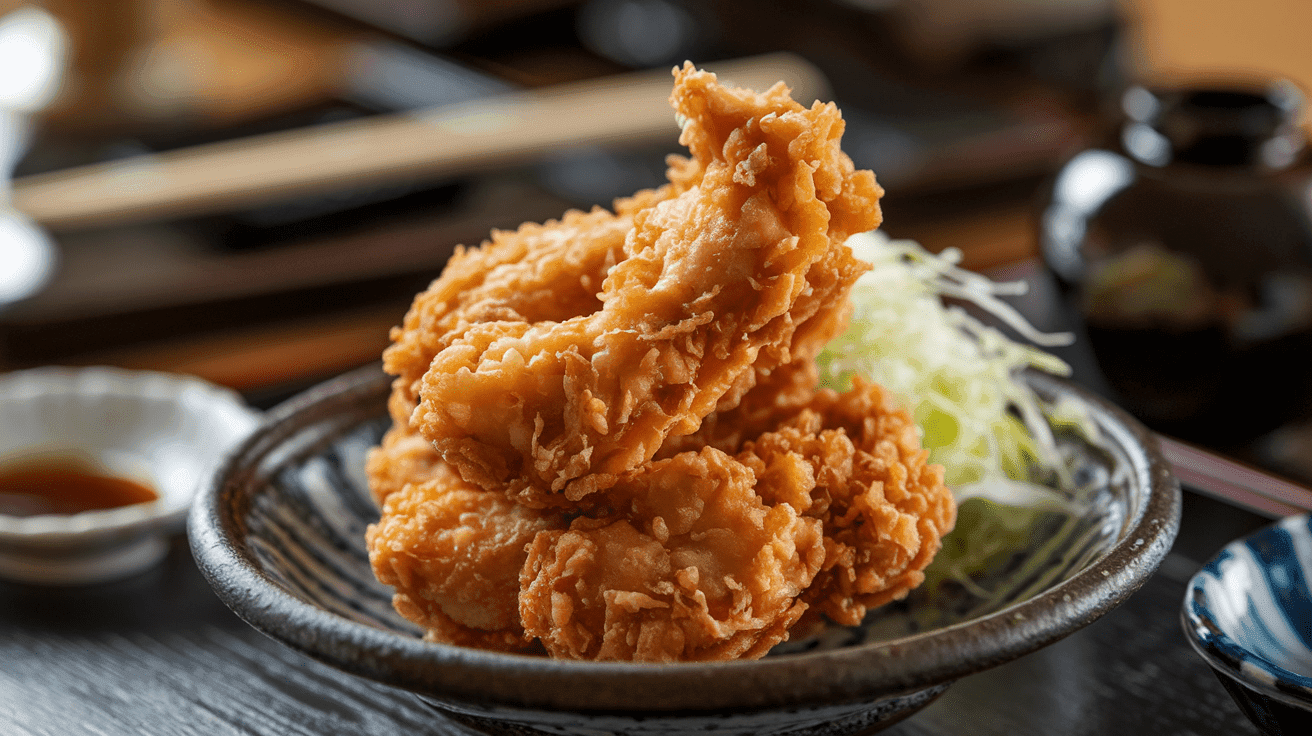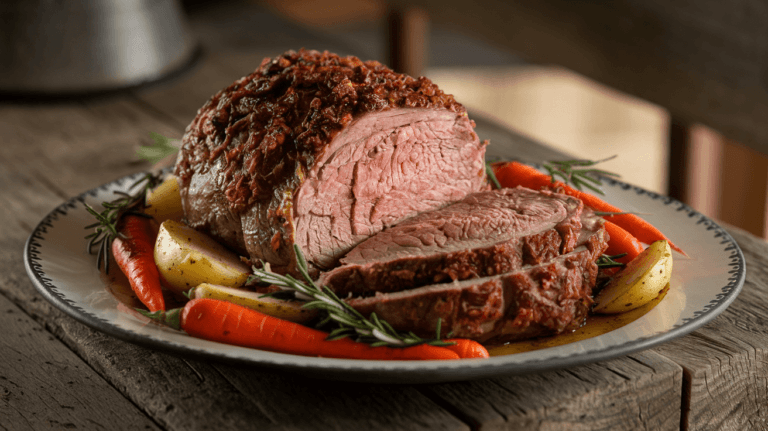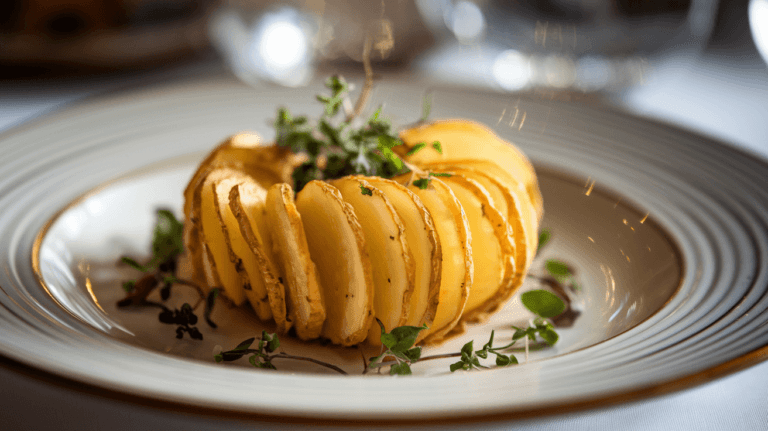Crispy on the outside, juicy on the inside Karaage chicken recipe is the ultimate Japanese comfort food. Whether served as a snack, main dish, or bento box favorite, this deep-fried delicacy has won hearts worldwide.
In this guide, you’ll discover everything you need to know to make authentic Karaage chicken recipe at home. From the essential ingredients to foolproof frying techniques, we’ll walk you through each step. We’ll also explore tasty variations, dipping sauces, and the best ways to store and reheat your leftovers without losing that signature crunch.
So, if you’ve ever wondered how to get that perfect golden-brown crispiness while keeping the inside incredibly tender, you’re in the right place. Let’s dive into the secrets of making the best Karaage chicken recipe!
Table of Contents
Introduction to Karaage chicken recipe
What is Karaage chicken recipe?
Karaage chicken recipe is a Japanese frying technique where bite-sized pieces of meat most commonly chicken are marinated, coated in starch, and deep-fried to perfection. Unlike Western-style fried chicken, which often uses a thick flour-based batter, karaage achieves its signature crispiness with a thin yet ultra-crunchy starch coating. The result? A light, airy texture that shatters with every bite.
Though karaage is often associated with chicken, the technique can be used for fish, seafood, or even tofu. However, Karaage chicken recipe remains the most popular version, beloved for its juicy, umami-rich flavor.
History and Cultural Significance in Japan
Originating in the Edo period, Karaage chicken recipe was influenced by Chinese frying methods but evolved into a uniquely Japanese dish. Over time, it became a staple in Japanese izakayas (pubs), street food stalls, and home kitchens.
In Japan, Karaage chicken recipe isn’t just food—it’s a cultural icon. Families prepare it for picnics, festivals, and school lunches. Many regions have their own spin on the dish, from soy-based marinades in Kyushu to zesty citrus-seasoned versions in Shikoku. Even convenience stores offer karaage as a quick snack, proving its widespread popularity.
Why Karaage is Different from Other Fried Chicken
So, what sets karaage chicken apart from other fried chicken styles?
✔ The marinade: Unlike American fried chicken, which relies heavily on dry seasoning, karaage gets its deep flavor from a soy sauce-based marinade infused with garlic, ginger, and other umami-packed ingredients.
✔ The coating: Instead of flour or breadcrumbs, karaage is typically coated in potato starch or cornstarch, giving it a delicate, crispy shell.
✔ The frying technique: Traditional karaage is often double-fried, ensuring a golden, ultra-crunchy crust while keeping the inside irresistibly juicy.
Now that we’ve explored the origins and uniqueness of karaage chicken, let’s move on to the next crucial step: choosing the right ingredients.
Essential Ingredients for Karaage chicken recipe
Creating the perfect karaage chicken starts with choosing the right ingredients. Every component plays a crucial role in achieving that signature crispy texture and rich, umami-packed flavor.
Key Ingredients and Their Roles
To make authentic karaage, you’ll need:
- Chicken thighs – The best choice for karaage chicken due to their natural juiciness and tenderness.
- Soy sauce – Adds deep umami flavor and acts as the base of the marinade.
- Sake – Helps tenderize the meat while enhancing its taste.
- Mirin – A touch of sweetness balances the marinade.
- Garlic & Ginger – Essential for that signature karaage aroma.
- Potato starch or cornstarch – Forms the light, crispy coating that makes karaage chicken irresistible.
- Sesame oil (optional) – Adds an extra layer of nuttiness and richness.
Traditional vs. Modern Variations
Traditional karaage relies on a soy sauce, garlic, and ginger marinade, but modern twists include spicy versions using chili powder or Sriracha. Some recipes swap sake for buttermilk or add egg yolks for a richer coating.
Best Cuts of Chicken for Karaage chicken recipe
Chicken thighs are ideal due to their high-fat content, which keeps the meat juicy. However, if you prefer a leaner option, chicken breast works, though it may not be as tender.
Now that we have the ingredients sorted, let’s dive into the actual cooking process.
How to Make Authentic Karaage chicken recipe
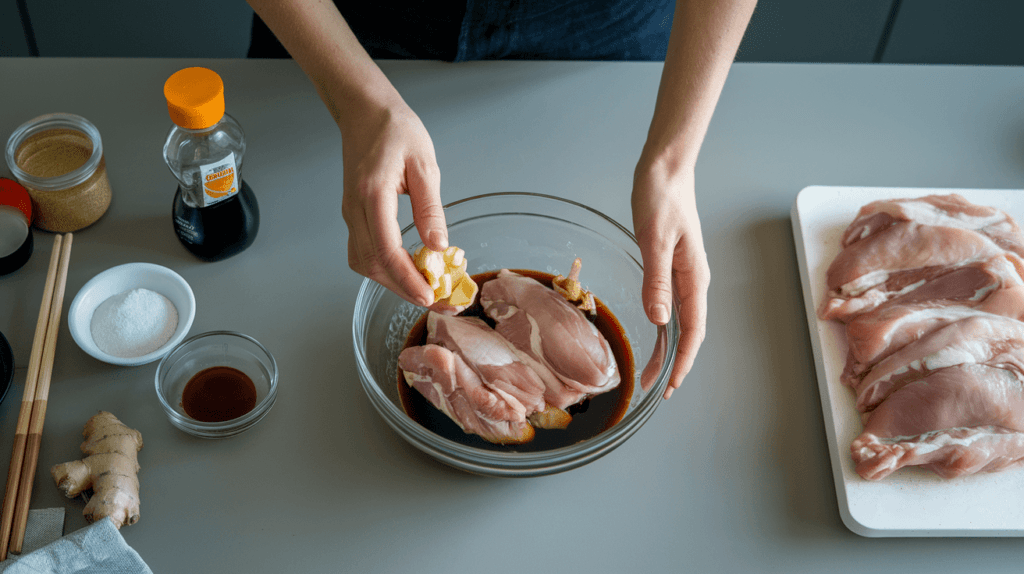
Making the best karaage chicken involves a few key steps: marination, coating, and frying. Follow this foolproof method to achieve restaurant-quality crispiness at home.
Step-by-Step Preparation Guide
- Cut the chicken – Slice chicken thighs into bite-sized pieces for even cooking.
- Prepare the marinade – In a bowl, mix soy sauce, sake, mirin, grated garlic, and ginger.
- Marinate the chicken – Let the chicken soak for at least 30 minutes (or up to 12 hours for deeper flavor).
- Coat the chicken – Drain excess marinade and coat each piece in potato starch or cornstarch.
The Importance of Marination and Timing
A longer marination time allows the flavors to penetrate deeply, making each bite more flavorful. However, marinating too long (over 24 hours) can break down the meat’s texture.
Coating: Potato Starch vs. Flour
Many chefs swear by potato starch for a lighter, crispier texture. Cornstarch works too, but it may result in a slightly softer crust. Avoid regular flour, as it absorbs more oil, making the coating heavier.
Deep-Frying Tips for the Crispiest Karaage
- Use neutral oils like canola or peanut oil for frying.
- Heat oil to 170-180°C (340-360°F) before frying.
- Fry in small batches to prevent the temperature from dropping.
- Double-fry for extra crunch—first fry for 90 seconds, then remove, let rest, and fry again for another minute until golden brown.
Common Mistakes to Avoid
🚫 Overcrowding the pan – This leads to soggy karaage chicken.
🚫 Frying at the wrong temperature – Too low, and the chicken absorbs oil; too high, and the coating burns before the inside is fully cooked.
🚫 Skipping the resting step – Allowing the chicken to rest between fries gives it a crispier crust.
Now that you’ve mastered the technique, let’s explore some delicious karaage variations in the next section!
Different Variations of Karaage
Karaage chicken is incredibly versatile, and chefs around the world have put their own spin on this beloved dish. While the classic version sticks to a soy sauce and ginger marinade, there are plenty of exciting variations to explore.
Spicy Karaage
For those who love a kick, spicy karaage is a must-try. The traditional marinade is enhanced with:
- Chili powder or cayenne pepper
- Sriracha or gochujang (Korean chili paste)
- A drizzle of spicy sesame oil
This version adds a fiery depth that pairs perfectly with a cool dipping sauce like Japanese mayo mixed with lime juice.
Garlic Karaage
If you’re a garlic lover, garlic karaage takes things up a notch. This variation includes extra minced garlic in the marinade, along with a touch of garlic powder in the coating for a bolder, roasted flavor.
Gluten-Free and Healthier Alternatives
For a lighter take, try baked or air-fried karaage. Instead of deep-frying, coat the marinated chicken in potato starch and lightly spray it with oil before baking at 200°C (400°F) for 25 minutes.
Gluten-free versions swap soy sauce for tamari or coconut aminos and ensure that the starch used is purely potato-based.
Karaage chicken can be customized in countless ways, making it a dish that never gets boring. Now, let’s talk about the best sides and sauces to serve with it!
Best Side Dishes and Dipping Sauces
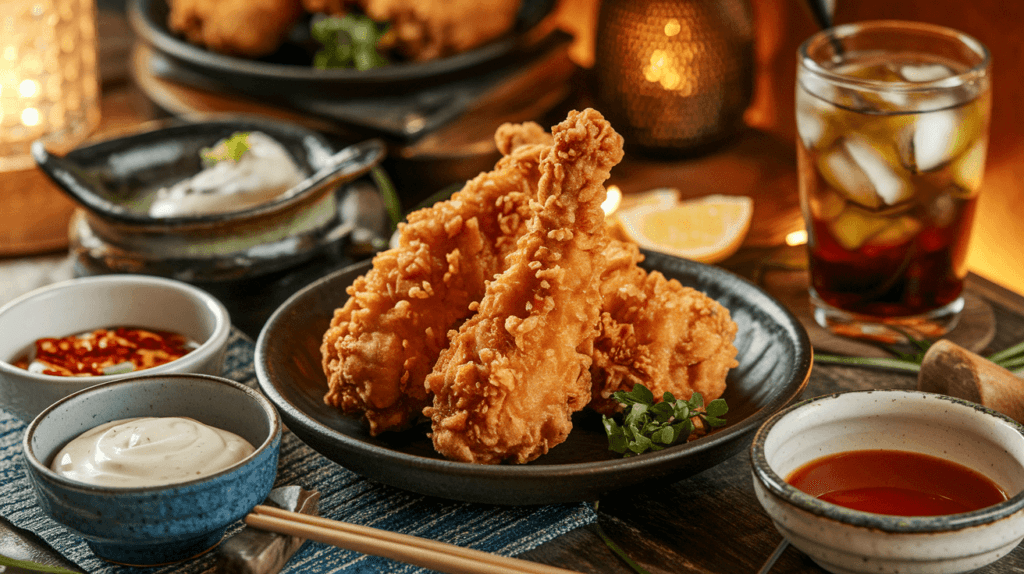
Karaage chicken is delicious on its own, but pairing it with the right sides and sauces elevates the experience. Here are the best accompaniments to complete your meal.
Traditional Japanese Sides
- Steamed rice – The ultimate classic pairing, soaking up the flavors beautifully.
- Shredded cabbage – Adds a fresh, crunchy contrast to the crispy chicken.
- Miso soup – A warm, umami-packed soup that balances the richness of fried food.
Popular Dipping Sauces and Condiments
A great dipping sauce enhances the flavor of karaage chicken. Here are some must-try options:
- Japanese mayo + soy sauce – A creamy, tangy favorite.
- Ponzu sauce – A citrusy soy-based sauce that adds brightness.
- Sweet chili sauce – Perfect for those who love a little sweetness with their crunch.
Pairing Karaage with Rice and Noodles
Karaage chicken is often served in rice bowls (donburi) alongside pickles and a soft-boiled egg. It’s also fantastic with ramen, adding a crispy protein element to a rich, flavorful broth.
No matter how you serve it, karaage chicken shines with the right sides and sauces. Now, let’s move on to storing and reheating so you can enjoy crispy leftovers!
Storing and Reheating Karaage chicken recipe
One of the best things about karaage chicken is that it stays delicious even after storing and reheating. However, to keep that crispy exterior and juicy interior, you need the right techniques.
How to Store Leftover Karaage
To maintain freshness, follow these steps:
- Refrigerate: Let the karaage chicken cool completely, then store it in an airtight container. It stays fresh for up to 3 days.
- Freeze: For long-term storage, place the chicken in a single layer on a baking sheet and freeze for 1 hour. Then, transfer it to a freezer-safe bag, removing as much air as possible. Frozen karaage lasts for up to 1 month.
Best Methods for Reheating Without Losing Crispiness
Reheating the wrong way can make karaage chicken soggy. Avoid microwaving directly, as it softens the crispy coating. Instead, try these methods:
- Oven or Toaster Oven: Preheat to 180°C (350°F) and bake for 10-15 minutes. This restores crispiness while keeping the inside juicy.
- Air Fryer: Set to 180°C (350°F) and heat for 5-7 minutes. This is the fastest and best way to bring back the crunch.
- Pan-frying: Heat a small amount of oil in a pan over medium heat. Fry each piece for 2-3 minutes per side until hot and crispy.
Using these methods, you can enjoy your karaage chicken just like it was freshly made! Now, let’s answer some frequently asked questions.
Karaage chicken recipe FAQs
Here are some of the most commonly asked questions about karaage chicken to help you perfect this dish.
1. What is the best oil for frying karaage?
The best oils for frying karaage chicken are neutral oils with a high smoke point, such as canola, peanut, or vegetable oil. These oils prevent burning and keep the flavor clean.
2. Can I bake or air-fry karaage instead of deep frying?
Yes! While deep frying gives the crispiest results, you can bake or air-fry for a healthier option. Bake at 200°C (400°F) for 25 minutes, flipping halfway, or air-fry at 180°C (350°F) for 10-12 minutes. Lightly spray the chicken with oil to enhance crispiness.
3. How long should I marinate karaage?
For the best flavor, marinate for at least 30 minutes, but no longer than 12 hours. A longer marination time enhances the taste, but too much can make the meat too soft.
4. What is the difference between karaage and tempura?
Karaage chicken is marinated and coated in starch, while tempura uses a light batter without marination. Karaage has a crispier, thicker coating, while tempura is lighter and airier.
These tips will help you master karaage chicken. Up next, let’s wrap up with some final thoughts!
Conclusion & Final Tips
Mastering karaage chicken is easier than you think! With the right ingredients, proper marination, and expert frying techniques, you can create crispy, juicy Japanese fried chicken at home.
Remember to use chicken thighs for extra tenderness, coat with potato starch for that signature crunch, and double-fry for the best texture. Whether you enjoy it plain, with dipping sauces, or alongside rice, karaage chicken is a dish that never disappoints.
Now that you know the secrets to making perfect karaage, it’s time to try it yourself! Enjoy this flavorful Japanese classic, and don’t be afraid to experiment with different variations.
Additional Tips for Perfect Karaage chicken recipe
Want to take your karaage chicken to the next level? Here are a few pro tips:
1. Let the Chicken Rest Before Frying
After coating the chicken, let it sit for 5-10 minutes. This allows the starch to absorb moisture, creating a crispier, more even coating.
2. Use Chopsticks for Handling
Instead of tongs, use chopsticks to place chicken in the oil. This prevents the coating from sticking or falling off.
3. Season Immediately After Frying
For extra flavor, sprinkle a pinch of salt or Japanese spice blends (like shichimi togarashi) while the chicken is still hot.
With these simple but effective tips, your karaage chicken will taste just as good as the best restaurants in Japan!
If you’re looking for more tasty recipes, check out our collection of delicious meal ideas!

